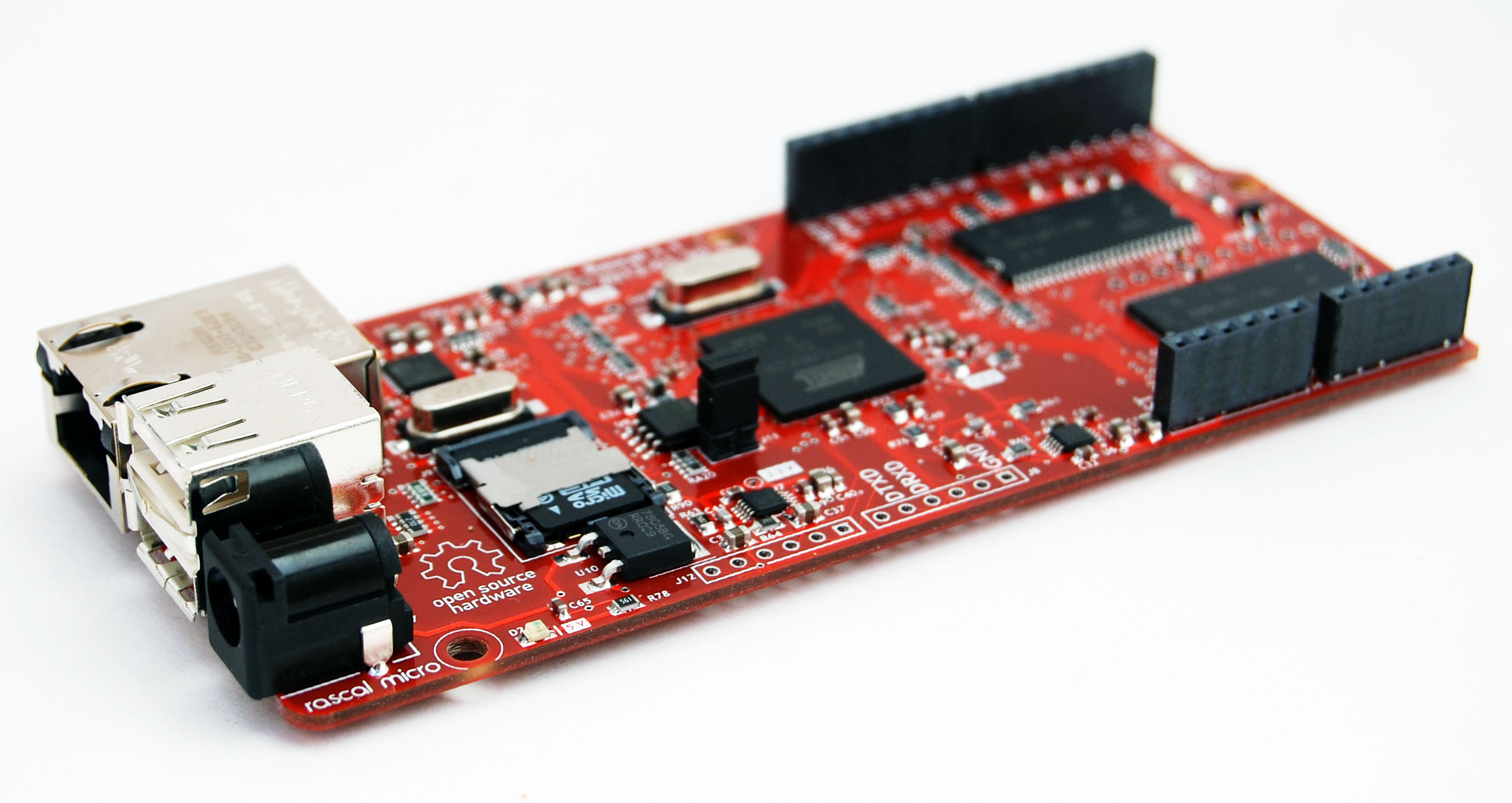Documentation and tutorials
The Rascal is a small, open-source computer designed for connecting sensors, motors, and whatever else you can build to the internet. It's about 5 cm x 10 cm (2 inches by 4 inches).

Basic tutorials: building stuff with the Rascal
These are a good place to start if you are new to the Rascal.
- Getting started: plugging the Rascal in and using its built-in web editor
- Python on the Rascal: triggering Python with web requests
- Introduction to Pytronics: the Rascal's Python hardware control library
- Digital control: turning stuff on and off through the web
- Serial communication: sending messages out the serial port
- Graphing analog sensor data: connecting a temperature sensor to the Rascal
- Batteries: Running the Rascal off of lithium polymer batteries
- Timed events: making stuff happen in the background
- Controlling motors: an example of real-time control
- Text messages and tri-color LEDs: Twilio, I2C to a BlinkM, and the Rascal
- DIY thermostat using Google calendar and SMS: combining a temperature sensor with a relay and the internet
Advanced tutorials: how the Rascal works under the hood
If you understand the basic usage of the Rascal, you might want to know how it works inside. The list below contains highly technical documents that are not intended for normal people. If you think you're trying to do something simple with the Rascal, they will likely be useless to you. On the other hand, if you're intending to soar over the mountains, pursuing things unattempted yet in Python or Ruby, we hide nothing from view.
- Guts of the software
- Build a new system image
- Putting a new filesystem onto a microSD card
- Working with Rascal code on Github
- Creating an Amazon machine image for building OpenEmbedded filesystems
- How data travels back and forth between your browser and the Rascal
- Blog post: Toggling pins on the AT91SAM9G20 with U-boot
- Blog post: Reprogramming the Rascal's serial flash with JTAG
Reference documents
Reference documents are the crack cocaine of documentation-- pure facts flooding directly to your brain.
Community documentation
There are a few hacker types who have written up the details of their experimentation with the Rascal. Many thanks are due to these courageous pioneers. Please let us know if you discover a tutorial or account that we should add here.
-
David Small on "Hello, World" with the Rascal
-
David Small on using a Mac for testing Rascal code
-
David Small on creating a new SD card on OS X
-
Mike on building the Rascal's Python appserver, uWSGI, on Ubuntu
-
Jacques Fortier on setting up a DHCP server on OS X
Hardware and software sources
All of the Rascal hardware and software is open source. For the code, hardware design files, and some precompiled binaries, check the sources page.
Other products
- The Precision Voltage Shield, an Arduino shield with eight 16-bit analog inputs
